Kalpesh Prajapati
SRTGAN: Triplet Loss based Generative Adversarial Network for Real-World Super-Resolution
Nov 22, 2022Abstract:Many applications such as forensics, surveillance, satellite imaging, medical imaging, etc., demand High-Resolution (HR) images. However, obtaining an HR image is not always possible due to the limitations of optical sensors and their costs. An alternative solution called Single Image Super-Resolution (SISR) is a software-driven approach that aims to take a Low-Resolution (LR) image and obtain the HR image. Most supervised SISR solutions use ground truth HR image as a target and do not include the information provided in the LR image, which could be valuable. In this work, we introduce Triplet Loss-based Generative Adversarial Network hereafter referred as SRTGAN for Image Super-Resolution problem on real-world degradation. We introduce a new triplet-based adversarial loss function that exploits the information provided in the LR image by using it as a negative sample. Allowing the patch-based discriminator with access to both HR and LR images optimizes to better differentiate between HR and LR images; hence, improving the adversary. Further, we propose to fuse the adversarial loss, content loss, perceptual loss, and quality loss to obtain Super-Resolution (SR) image with high perceptual fidelity. We validate the superior performance of the proposed method over the other existing methods on the RealSR dataset in terms of quantitative and qualitative metrics.
Learned Smartphone ISP on Mobile NPUs with Deep Learning, Mobile AI 2021 Challenge: Report
May 17, 2021

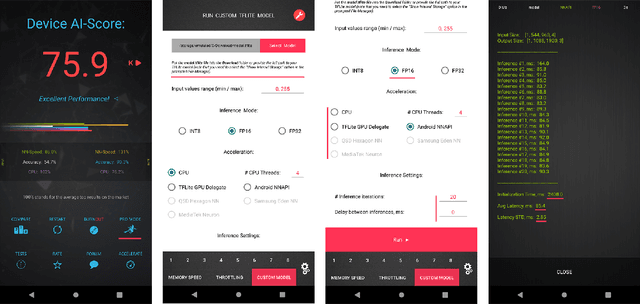
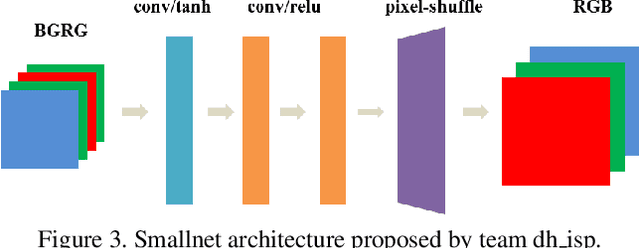
Abstract:As the quality of mobile cameras starts to play a crucial role in modern smartphones, more and more attention is now being paid to ISP algorithms used to improve various perceptual aspects of mobile photos. In this Mobile AI challenge, the target was to develop an end-to-end deep learning-based image signal processing (ISP) pipeline that can replace classical hand-crafted ISPs and achieve nearly real-time performance on smartphone NPUs. For this, the participants were provided with a novel learned ISP dataset consisting of RAW-RGB image pairs captured with the Sony IMX586 Quad Bayer mobile sensor and a professional 102-megapixel medium format camera. The runtime of all models was evaluated on the MediaTek Dimensity 1000+ platform with a dedicated AI processing unit capable of accelerating both floating-point and quantized neural networks. The proposed solutions are fully compatible with the above NPU and are capable of processing Full HD photos under 60-100 milliseconds while achieving high fidelity results. A detailed description of all models developed in this challenge is provided in this paper.
NTIRE 2020 Challenge on Real-World Image Super-Resolution: Methods and Results
May 05, 2020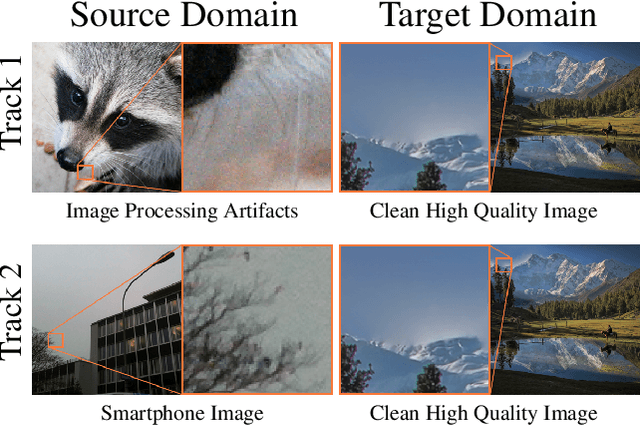
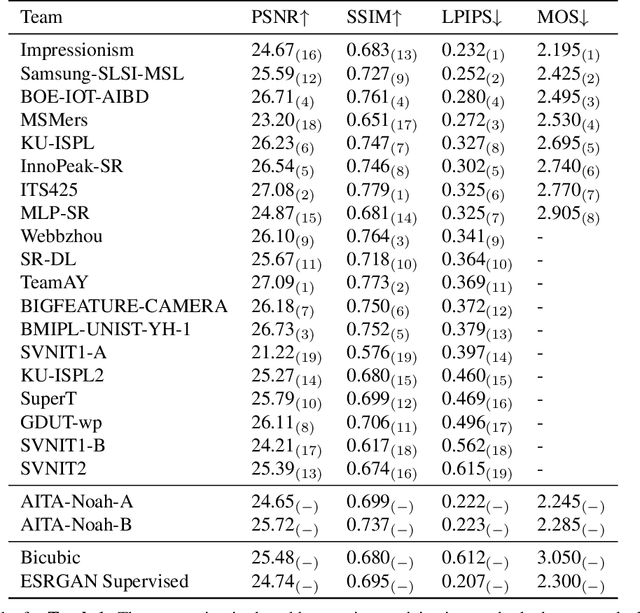
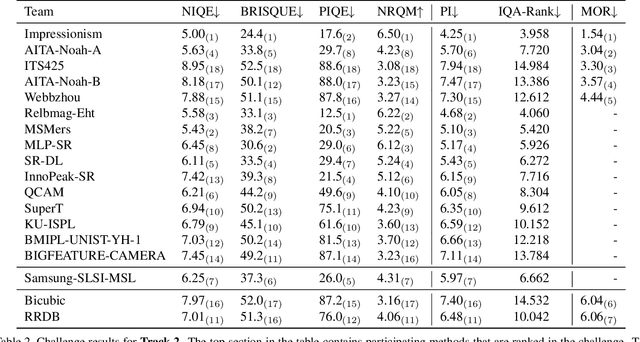

Abstract:This paper reviews the NTIRE 2020 challenge on real world super-resolution. It focuses on the participating methods and final results. The challenge addresses the real world setting, where paired true high and low-resolution images are unavailable. For training, only one set of source input images is therefore provided along with a set of unpaired high-quality target images. In Track 1: Image Processing artifacts, the aim is to super-resolve images with synthetically generated image processing artifacts. This allows for quantitative benchmarking of the approaches \wrt a ground-truth image. In Track 2: Smartphone Images, real low-quality smart phone images have to be super-resolved. In both tracks, the ultimate goal is to achieve the best perceptual quality, evaluated using a human study. This is the second challenge on the subject, following AIM 2019, targeting to advance the state-of-the-art in super-resolution. To measure the performance we use the benchmark protocol from AIM 2019. In total 22 teams competed in the final testing phase, demonstrating new and innovative solutions to the problem.
 Add to Chrome
Add to Chrome Add to Firefox
Add to Firefox Add to Edge
Add to Edge